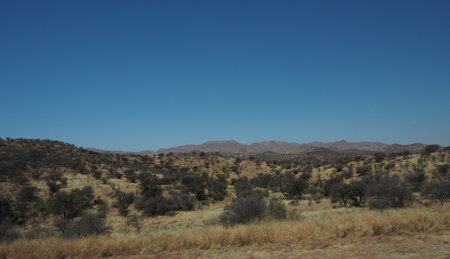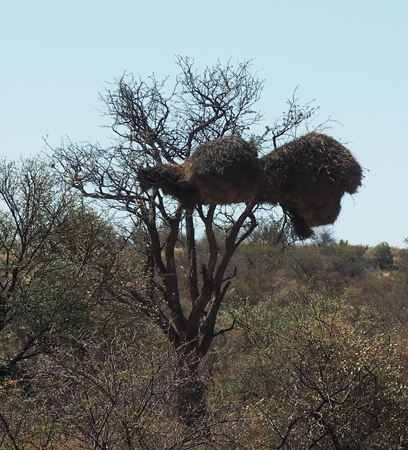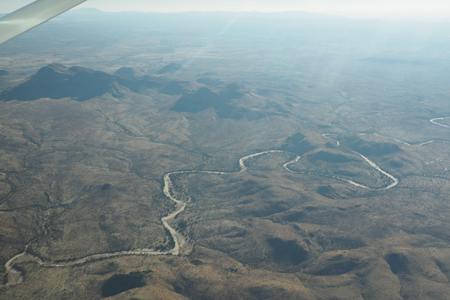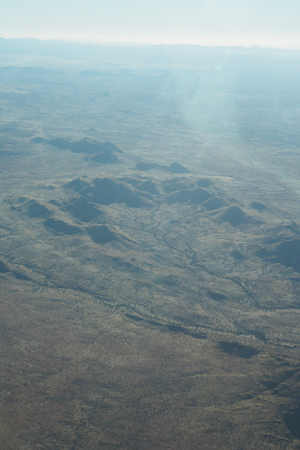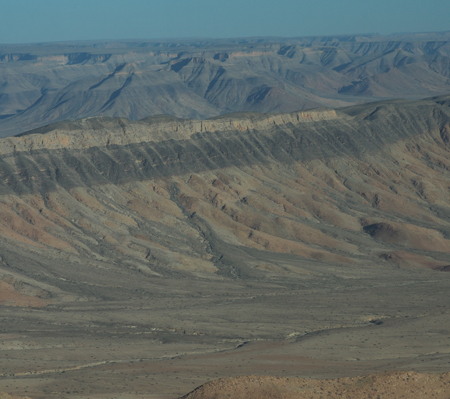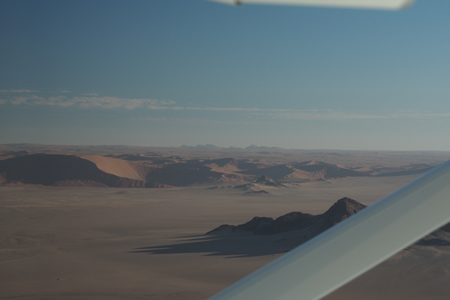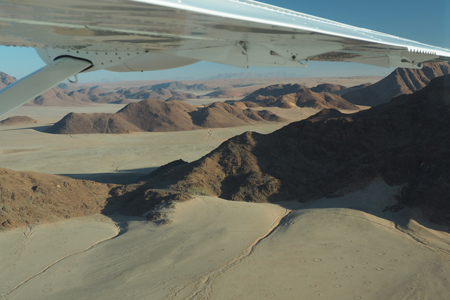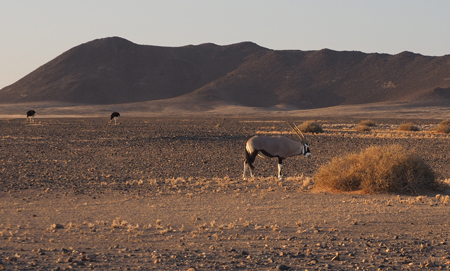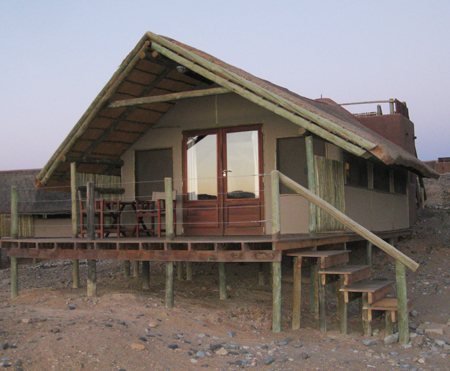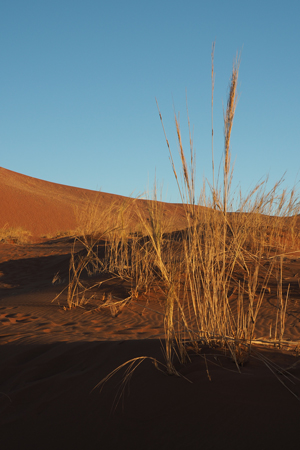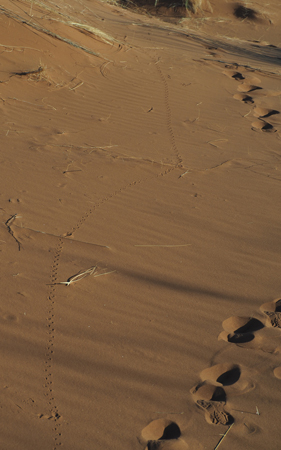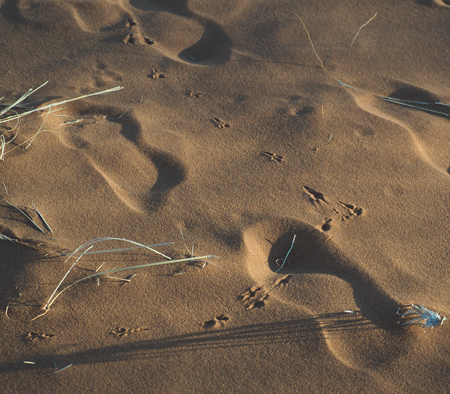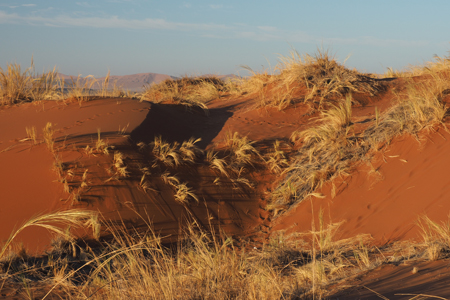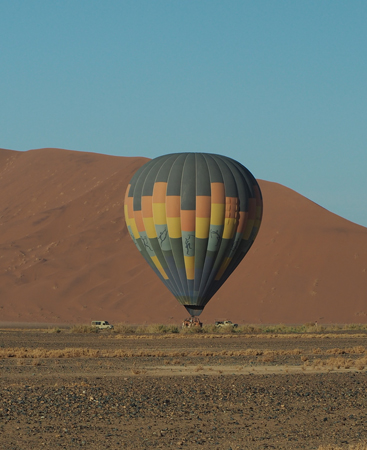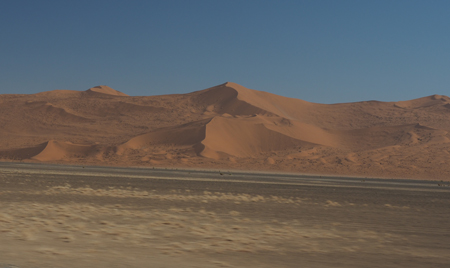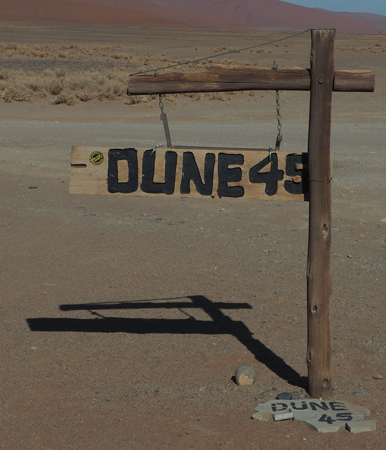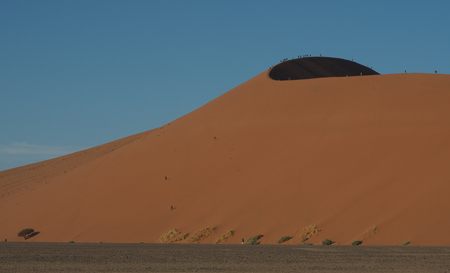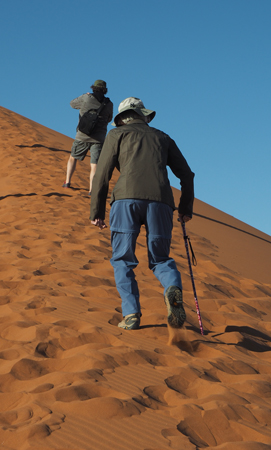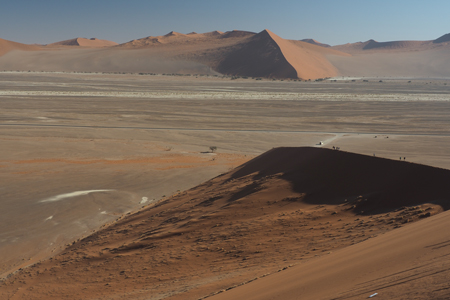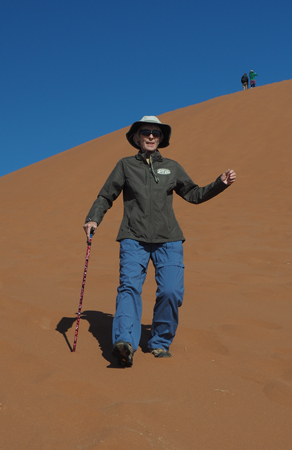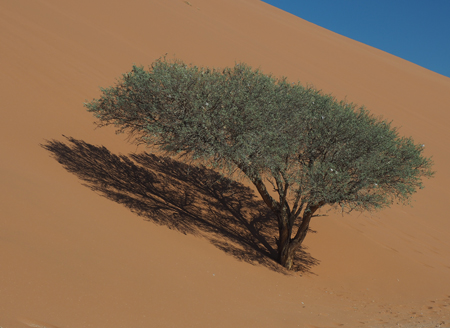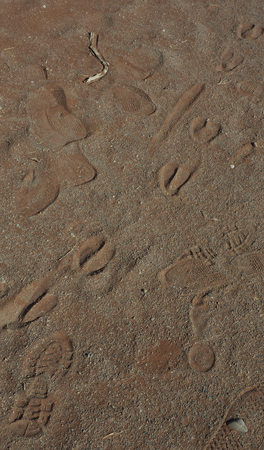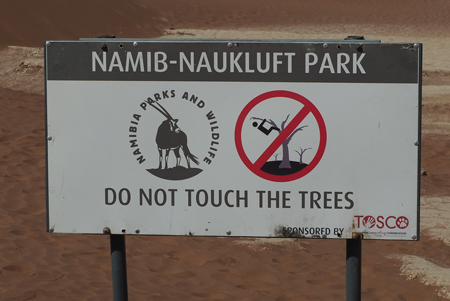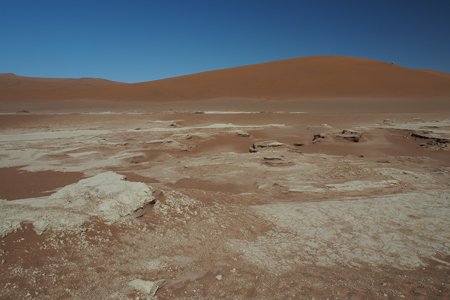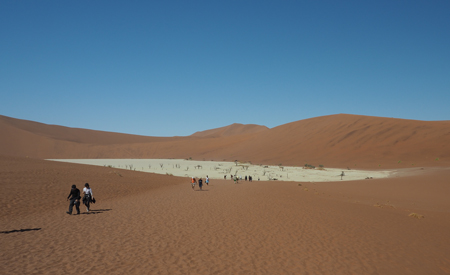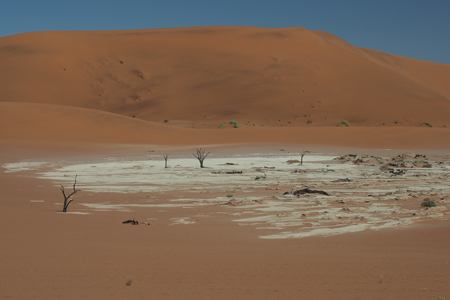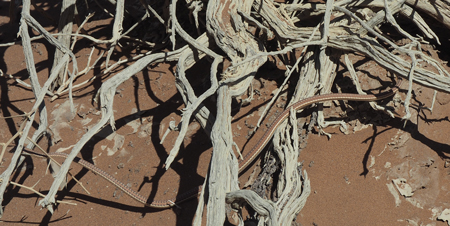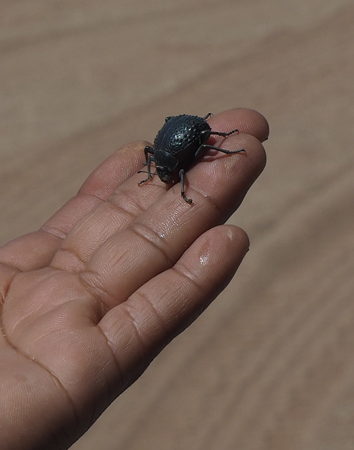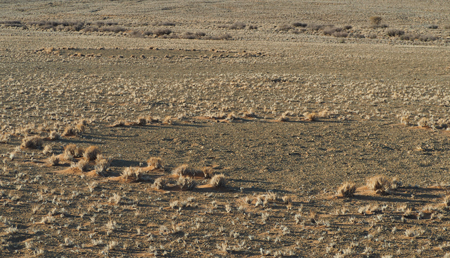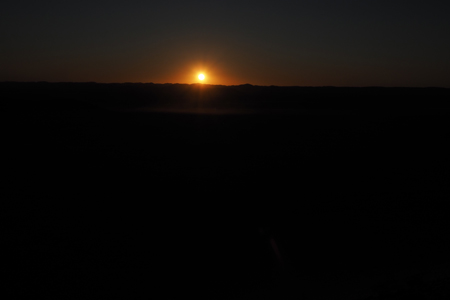Thurs., 8/24/2017 – Windhoek to Sossusvlei in the Namib Desert
We left the hotel at 9 AM and spent two-hours in Windhoek to shop and then we drove toward the airport and stopped at the Haja Lodge Game Reserve for a nice lunch. The lasagna was all meat and cheese and no noodles.
At the airport we had to wait in line for a security check even though we had a private charter plane and our own pilot. This delay was the excuse for missing the sunset in the Namib Desert. Our plane sat 12 passengers and was a single engine prop. The pilot was another young, white female.
Two local guides and two nine-passenger jeep-like vehicles met us at Kulala's gravel airstrip.
Our “tent” is very nice and we have a wonderful view. There is a ladder to the roof where we can sleep under the stars if we wish. They will put a mattress up there for sleeping.
We ate dinner at the lodge and had a choice between “game” steak (oryx) or stuffed pork chop. Both were very good.
Drive to the Airport
Social weaverbird nest
Flight to Kulala
Flight to Kulala
Flight to Kulala
Flight to Kulala - Namib Desert
Flight to Kulala - Namib Desert
Flight to Kulala - Namib Desert
Oryx
Kulala Desert Lodge - our tent
Fri., 8/25/2017 – Kulala in the Namib Desert
We were up at 5 AM, had a continental breakfast of bread, meat and cheese, fruit, and yogurt, and left for the dunes at 6:15. Our first stop was for a nature walk with our guides. Why is the sand red? “The characteristic red dunes of the Namib Desert have developed over many millions of years. The red sand that forms the dunes was deposited into the Atlantic Ocean from the Orange River. The Benguela current then carried this sand northwards, to be deposited back onto the land by the ocean’s surf. From here the wind carried the red sand inland to form the dunes over time.” (Sossusvlei.org)
Namib Desert Red Sand Dune
Balloons over the Namib Desert
Namib Desert
Namib Desert
Namib Desert
Namib Desert
Namib Desert
Namib Desert Dune
Balloon landing in the Namib Desert
Namib Desert Dune
Namib Desert Dunes
Namib Desert Dunes
We drove to Dune 45 and got to walk up the spine to the top. If we walked in the footsteps of the person ahead of us, it was a lot easier with less slipping. The view at the top was wonderful and the cool breeze was great. Instead of walking back down the spine several of us went over the edge and “glissaded” down, kind of like using snowshoes. It was fun doing some physical activity!
Dune 45
Dune 45
Dune 45
Gale on the way up Dune 45
Atop Dune 45
View from the top of Dune 45
Glissading down Dune 45
Glissading down Dune 45
Dune 45
Oryx tracks
We drove on the Sossusvlei. The word means, “a gathering (Sossus) place (vlei).” (Vlei literally means “shallow depression that fills with water" in Afrikaans.) We walked one mile to Deadvlei. The walk was over red sand and clay flats. A river (Tsauchab River) once flowed through here to the Atlantic Ocean but thousands of years ago the dunes developed and shut off the exit. There are now three patches where the water evaporated leaving a white clay surface with dead trees standing sentry. It was beautiful and kind of eerie. The trees are 800 to 1,000 years old and don’t rot because there is no moisture.
Sign at Deadvlei
Deadvlei
Deadvlei
Deadvlei
We then drove over to a picnic spot under an old spreading acacia tree and Rachel and Matheus opened out our mid-morning meal, at 11 AM, of grilled ham and cheese sandwiches, fruit, biscotti, energy bars, coffee, tea, soda, and beer. The spot was another beautiful place.
After our “snack” we headed back to the lodge for 1 PM lunch! On the way Rachel found a Tenebrionid (or black) beetle to show us. It stands on its head to allow drops of water to run down the grooves on its body into its mouth. Matheus saw a Sand snake path on the road and we stopped to find it in a bush. It was smaller than a garter snake and red as the sand.
Brown Snake
Brown Snake
Fog-catcher Beetle
For lunch we had a choice between fish fillet or mussels with spaghetti. After lunch and an hour “at leisure” we assembled for a drive to a spot to watch the sunset. On the way we saw a small group of Hartmann’s Mountain zebras on the ridge of a hill. They were mostly in silhouette but we could see some black stripes and their white underbelly. The white allows the heat from the sand be reflected.
Our “sundowner” was on the top of a hill overlooking the flat desert and islands of hills. The big ball of sun sank below the western horizon and the afterglow lasted at least a half hour. The ride back was a very rough and rocky 4-wheel drive or “African massage.”
Desert Zebra
As we have driven around for the last two days we have seen many “fairy circles” on the dunes or at their foot. No one knows why these appear. They grow larger in diameter, nothing grows in the middle, and the “grass” at the edge is higher than the same plant scattered elsewhere. The three possible explanations at this point are: a fungus is spread across the middle, or insects eat the roots in the middle, or they were left by aliens. Scientists may have just advanced an explanation.
Sunset over the desert
Sunset over the desert
| Return to Top | Return to Itinerary | Return to Trips page to view other trips | Return to Dreamcatcher Home Page |
